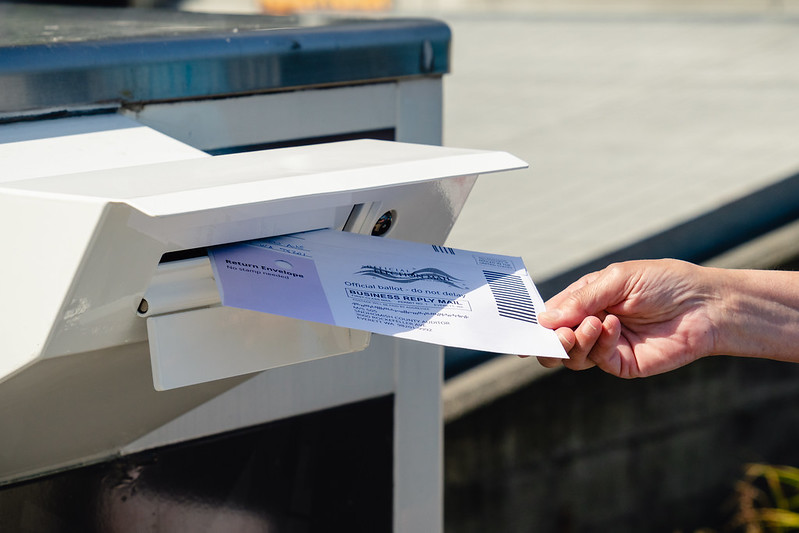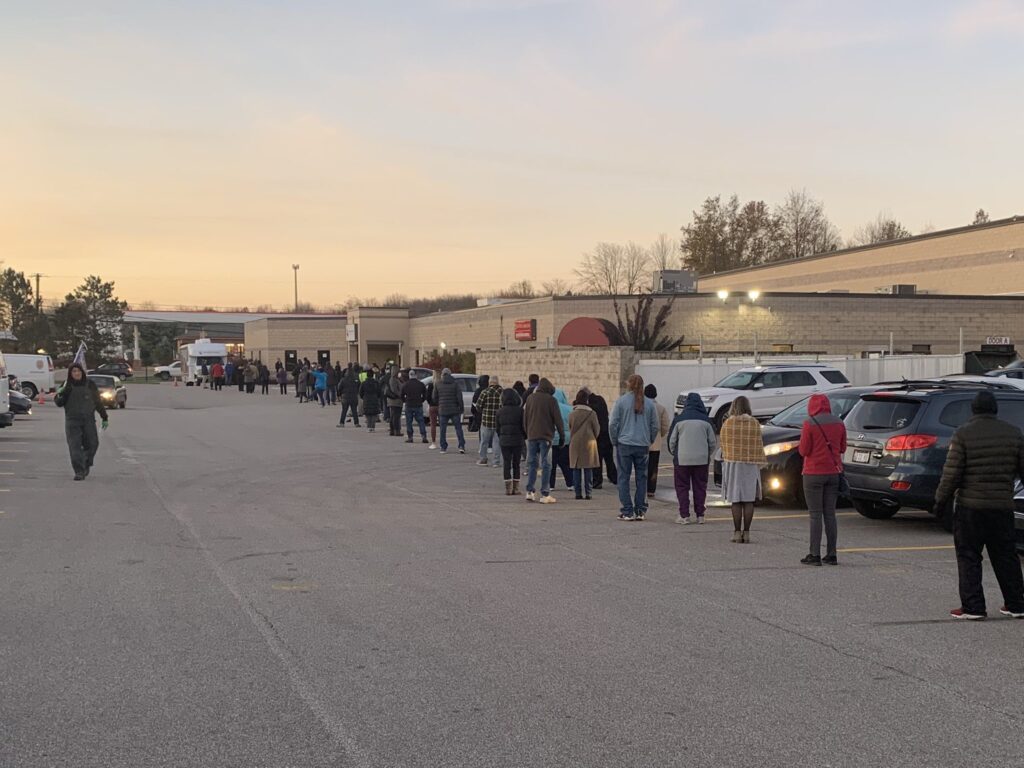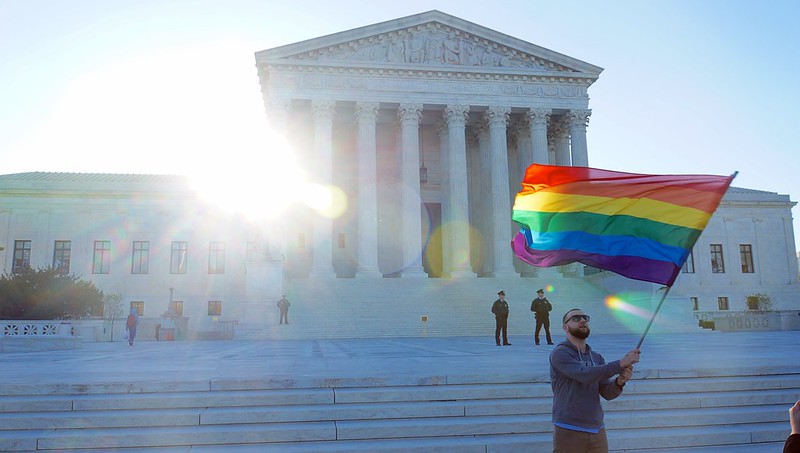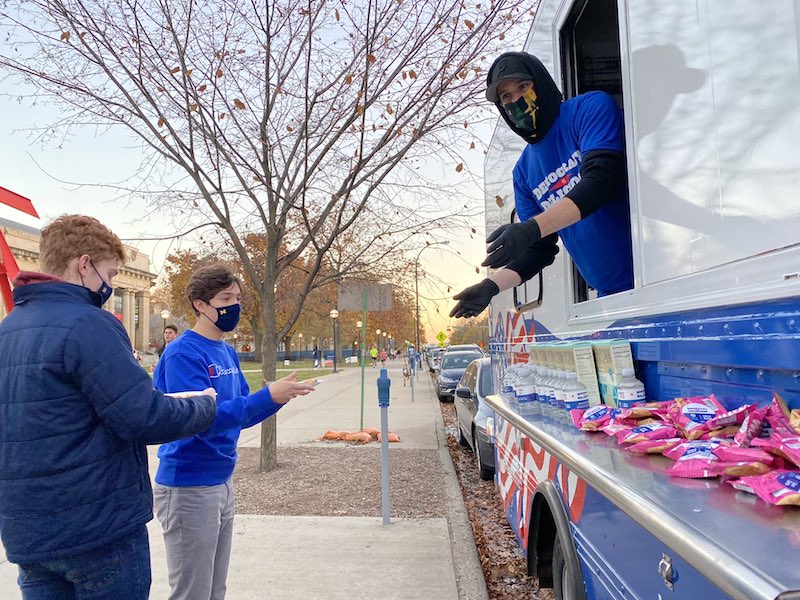
Updated November 9, 2020 at 11 a.m. PST.
Back in October, we let you know which ballot measures we were keeping an eye on this election cycle—initiatives that could advance the rights of women, people of color, voters, workers and LGBTQ people … or take them away.
While results in many races are still being tallied, due to high rates of mail-in voting, several others have been called.
Here’s how the many state initiatives we followed shook out.
Abortion Access
COLORADO
By a margin of 59 percent to 41 percent, Colorado voters defeated Proposition 115, which would have effectively prohibited abortions after 22 weeks. The proposition included no exceptions for rape, incest or fetal abnormalities or health of the pregnant person—the only exception being if the pregnant woman’s life is in imminent danger.
“For the fourth time in 12 years, Coloradans have rejected attempts to ban abortion at the ballot, trusting patients and families to make the personal medical decisions that are right for them, without interference from politicians,” Lucy Olena, campaign manager for the No on 115 campaign, said in a statement.
LOUISIANA
By a margin of 62 percent to 37 percent, Louisiana voters passed Amendment 1—a huge blow for reproductive rights. The amendment supports adding the following sentence to the Louisiana Declaration of Rights:
“To protect human life, nothing in this constitution shall be construed to secure or protect a right to abortion or require the funding of abortion.”
Feminists have been quick to clarify: Because the right to abortion is a federal constitutional right, the amendment in Louisiana does not take immediate effect—meaning abortion is still legal in Louisiana. But if Roe v. Wade were to fall, then the state could ban or restrict abortion.
(Read more Ms. coverage of these abortion-related measures here.)
Voting Rights
ALABAMA, COLORADO and FLORIDA
Three states—Alabama, Colorado and Florida—had amendments on the ballot that would limit voting to “citizens of the U.S. who are 18 years of age or older.” All of the measures passed.
- Alabama voters voted an overwhelming yes, by a margin of 77 percent to 22 percent.
- Colorado voters approved, by a margin of 63 percent to 37 percent.
- Florida voters approved by an overwhelming margin of 79 percent to 20 percent.
U.S. citizenship is already required in all states in order to vote—noncitizen voting is only permitted in a few towns and cities nationwide, and only applies to select local races—but Florida organization Citizen Vote Inc. has channeled millions of dollars into amendments like these three, which change the language in the constitution from saying that “every” citizen over the age of 18 can vote to “only” citizens over age 18 can vote.
Opponents of the amendments argue they are designed to intimidate citizen immigrant voters, and to bring out the anti-immigrant vote—while simultaneously suppressing the vote of 17-year-olds who in some places are allowed to vote in a primaries (if they will be 18 by the time of the general election).
CALIFORNIA
Californians voted, by margin of 59 percent to 40 percent, to pass Proposition 17, which will restore voting rights to people convicted of felonies upon completion of their prison term.
However, by a margin of 55 percent to 44 percent, the state voted against Proposition 18, a measure that would have allowed 17-year-olds who will be 18 at the time of the next general election to vote in primaries and special elections.
MASSACHUSETTS, NORTH DAKOTA and ALASKA
By a margin of 54 percent to 45 percent, Massachusetts voters defeated Question 2, which would have supported adopting ranked-choice voting (RCV) for “state executive officials, state legislators, federal congressional representatives and certain county offices.”
Alaskans also voted against state-wide RCV, striking down Measure 2 by a margin of 56 percent to 43 percent. Measure 2, if passed, would have also implemented increased transparency measures in political contributions.
While a similar RCV measure made it to the ballot in North Dakota, it was removed from the ballot by the state Supreme Court prior to the election in August.
However, voters came out in support of RCV in all of the cities where it was on the ballot:
- Albany, Calif., by a margin of 72 percent to 27 percent.
- Bloomington, Minn., 54 percent to 45 percent.
- Boulder, Colo., 78 percent to 21 percent.
- Eureka, Calif., 61 percent to 38 percent.
- Minnetonka, Minn., 54 percent to 45 percent.
Voting reform advocates aren’t giving up hope for ranked-choice voting on a larger scale.
“I think the loss in Massachusetts and the tight race in Alaska are a reminder that working with legislators to pass RCV through the legislative process may be the most effective, and certainly the most affordable, way to advance reform,” said Cynthia Richie Terrell of RepresentWomen. “It’s important to have conversations about reform with existing lawmakers to build investment in the reform and protect it from the inevitable attacks.”
RCV as a voting reform benefits women and BIPOC candidates by eliminating vote-splitting and incentivizing positive campaigning, among other benefits.
(Read more Ms. coverage of these measures here.)

MISSISSIPPI
Mississippi voters struck down a Jim Crow-era constitutional provision, intended to ensure that white voters chose statewide officials, by a 78 percent to 21 percent margin. The amendment, which was added to the constitution in 1890 along with a whole host of other voter suppressing Jim Crow provisions such as literacy tests and poll taxes (which have since been nullified), created an “electoral college-like system” that required candidates for statewide office to win a majority of state house districts as well as the popular vote.
NEVADA
Sixty-three percent of Nevadans voted yes to support Question 4, a constitutional amendment that would entitle voters to certain protections, including the right to “vote without being intimidated, threatened or coerced,” and the right to “equal access to the elections system without discrimination,” among other protections and procedures to improve voting access. (Thirty-six percent of voters opted no.) This makes Nevada the first state to include a Voter’s Bill of Rights in their constitution.
State Senator Pat Spearman (D) said the measure would help guard against threats to voting rights, in the face of increased election interference.
“If we don’t add this to our constitution, then a legislature in 2023, 25, whatever, could come and say, well, we don’t believe in this anymore,” she told KTNV Las Vegas.
PUERTO RICO
Puerto Ricans voted by a 52 to 47 percent margin in support of the Puerto Rican Statehood Referendum, which will support Puerto Rico taking steps towards seeking statehood. While the referendum is not binding, proponents hope that a strong turnout on the measure would encourage action.
LGBTQ Rights
NEVADA
By 62 percent to 37 percent, Nevada voters approved Question 2, which would recognize marriage between couples regardless of gender.

Worker’s Rights
CALIFORNIA
Voters in California passed Proposition 22, which would classify app-based drivers who work for companies such as Uber and Lyft as contractors, by a margin of 58 percent to 41 percent. The campaign for the proposition was one of the most expensive ones on the California ballot, with Uber and Lyft pouring record amounts of money into “Yes on 22” campaigns. Notably, the proposition also requires a seven-eighths majority in the legislature in order to amend it.
COLORADO
By a margin of 57 percent to 42 percent, Colorado voters passed Proposition 118, which would create a paid medical and family leave insurance program in the state.
“Colorado has made history as the tenth state—including D.C.—in the country to pass paid family and medical leave and the first to pass it through a ballot measure. This win shows the immense public support for safety net programs like paid family and medical leave,” said Ashley Panelli, Colorado 9to5 paid leave campaign manager and a leader in the Colorado coalition Yes on 118.
“I’m optimistic that we have set a precedent for local and national advocates across the country to follow, and that one day soon we will guarantee paid leave for all.”
FLORIDA
Florida voters passed Amendment 2, which will increase the minimum wage to $15 by 2026. A 60 percent supermajority was required to pass the amendment—and it just made the cut, with 60.81 percent voting in favor, and 39 percent of voters opposed.
Criminal Justice
CALIFORNIA
Californians defeated Proposition 20—the “Criminal sentencing, parole, and DNA collection initiative,” which would have made changes to policies related to criminal sentencing charges, prison release and DNA collection—by a margin of 62 percent to 37 percent.
Specifically, the proposition would have increased penalties for certain property crimes and parole violations, while also imposing harsher standards for some to qualify for early parole or release from prison. Its opponents argue that California needs to reform its criminal justice system, which disproportionately incarcerates Black and brown people—and that Prop 20 would be a step in the wrong direction.
And by a 55 to 44 percent margin, Californians also defeated Proposition 25, thereby repealing the contested Senate Bill 10, and keeping in place the use of cash bail for detained suspects awaiting trials. Proposition 25 has been a subject of debate within progressive circles: While progressive leaders (including big names like Joe Biden and Kamala Harris) generally support the elimination of cash bail, some—including groups such as Human Rights Watch and the ACLU of Southern California—worry that the system of risk assessments that would have replaced cash bail in California if the measure had passed involved the use of algorithms that may have potentially made the system even more racially biased than it was under cash bail.

OKLAHOMA
Oklahoma voters defeated State Question 805, which would have prohibited a convicted person’s former felony convictions from being used to calculate future punishments, by a 61 to 38 percent margin.
Education
WASHINGTON
Washington voters passed Sex Education in Public Schools Measure, also known as Referendum 90, by a margin of 57 to 42—meaning public schools are required to “provide comprehensive sexual health education for all students and requiring students to be excused if requested by their parents.”
Gender Equality/Civil Rights
UTAH
Utah voters passed Constitutional Amendment A, the “Gender-Neutral Constitutional Language Amendment,” by a 57 to 42 percent margin. The amendment will remove all instances of gendered language from the Utah Constitution.
CALIFORNIA
By a 54 to 45 percent margin, Californians voted no on Proposition 16, thereby leaving in place the state’s notorious Proposition 209 “Affirmative Action Amendment” (1996), which says that the state cannot discriminate or grant preferential treatment based on race, sex, color, ethnicity or national origin in public employment, education or contracting.
Drug Legalization and Decriminalization
ARIZONA, MONTANA and NEW JERSEY
Arizona (by a margin of 59 percent to 40 percent), Montana (57 percent to 43 percent) and New Jersey (67 percent to 33 percent) all passed initiatives that would legalize recreational marijuana use.
MISSISSIPPI and SOUTH DAKOTA
Mississippi (68 percent to 32 percent) and South Dakota (70 percent to 30 percent) both voted in favor of measures that would legalize medical marijuana.
In Mississippi, voters also had the option to vote on initiatives to determine the specifics of Measure 1 if it were to pass. Seventy-three percent of voters opted for Initiative 65, which includes more specifics (qualifying conditions, tax rates, etc), rather than Alternative 65A, which would have left many of these details to be set by the state legislature. (Just 26 percent of voters opted for 65A.)
OREGON and WASHINGTON, D.C.
Oregon (56 percent to 44 percent) and the District of Columbia (76 percent to 23 percent) both voted to support the decriminalization of psilocybin mushrooms and entheogenic plants.
OREGON
In addition to decriminalizing psilocybin, Oregon voters also voted in favor of Measure 110, which will decriminalize possession of certain drugs, and establish an addiction treatment and recovery program, by a margin of 58 percent to 41 percent.
You may also like:





